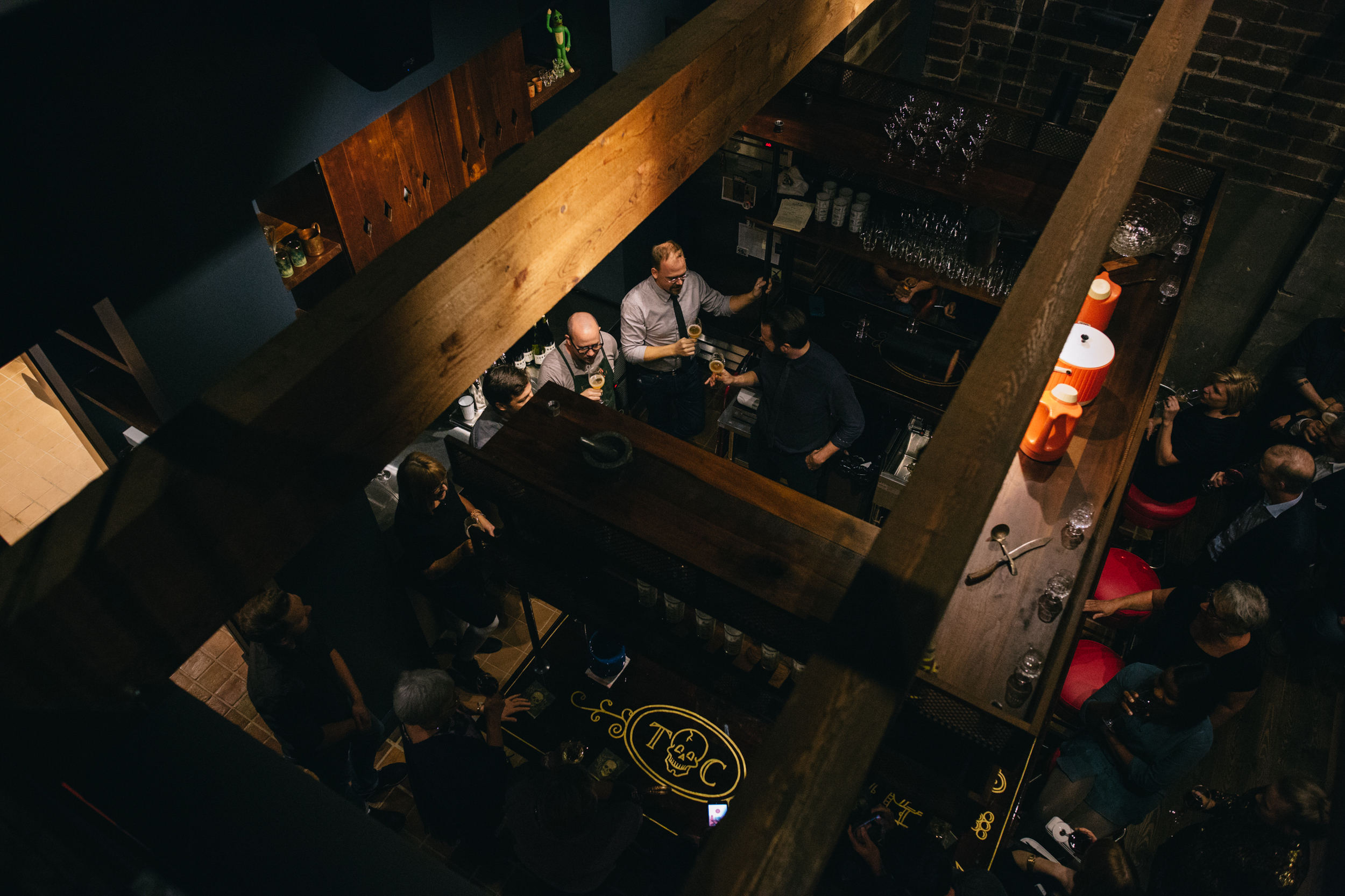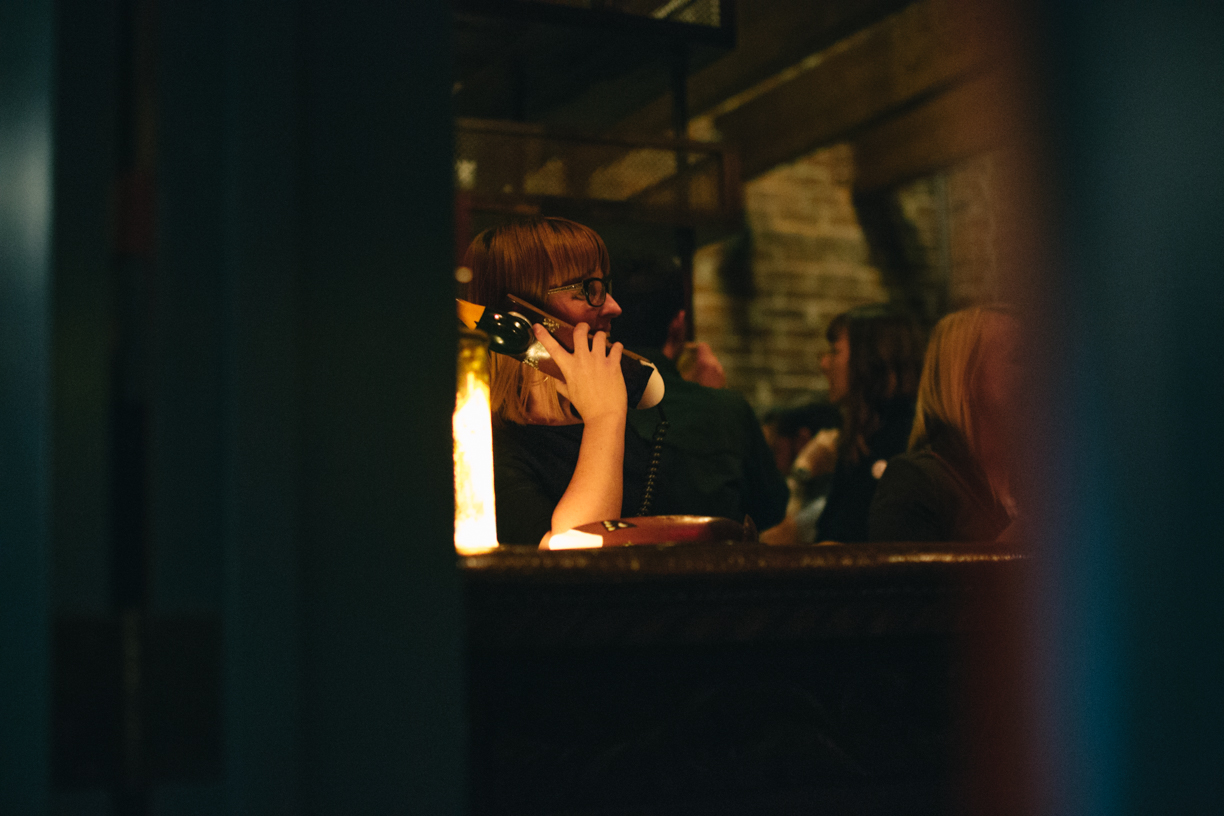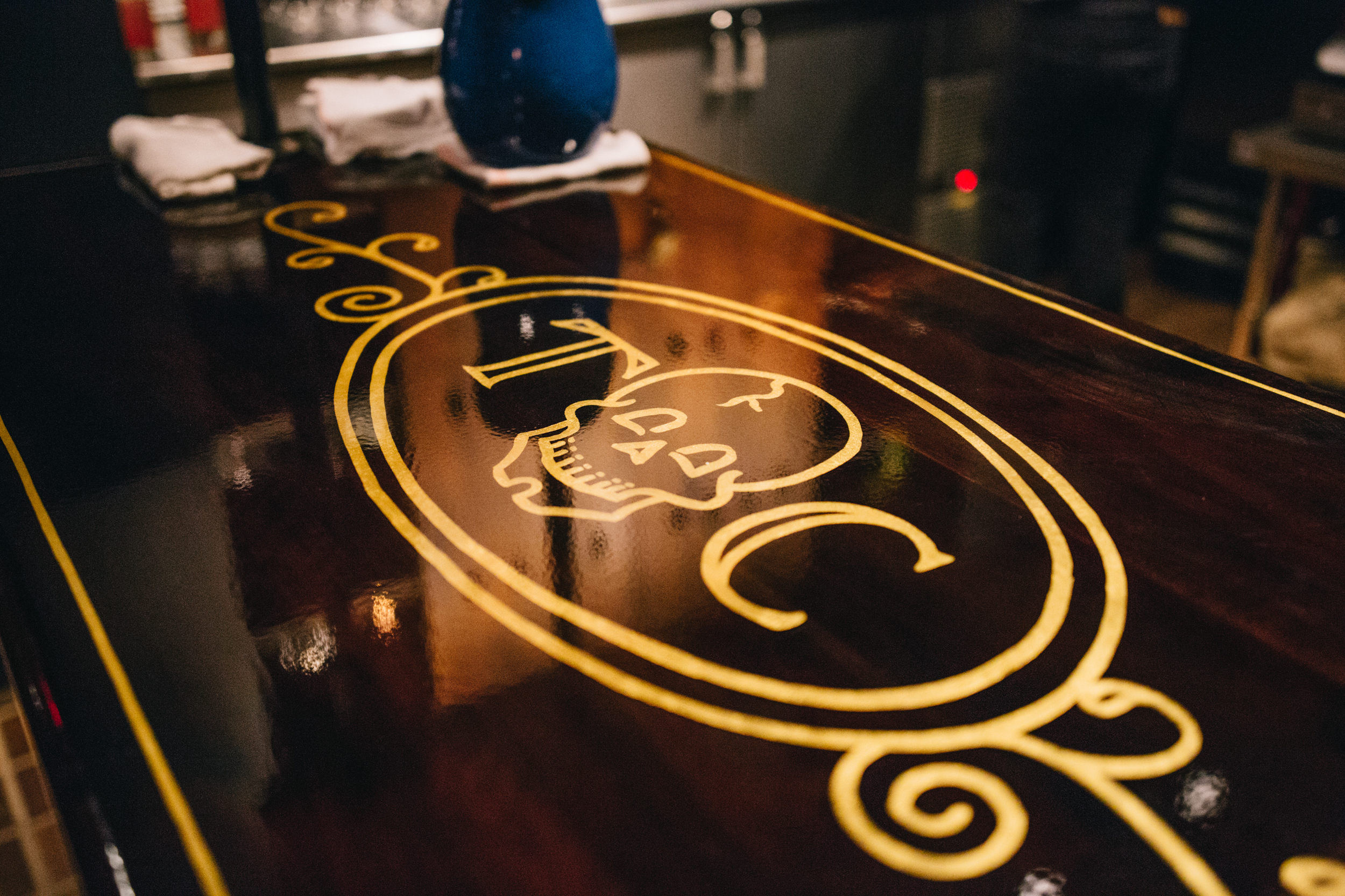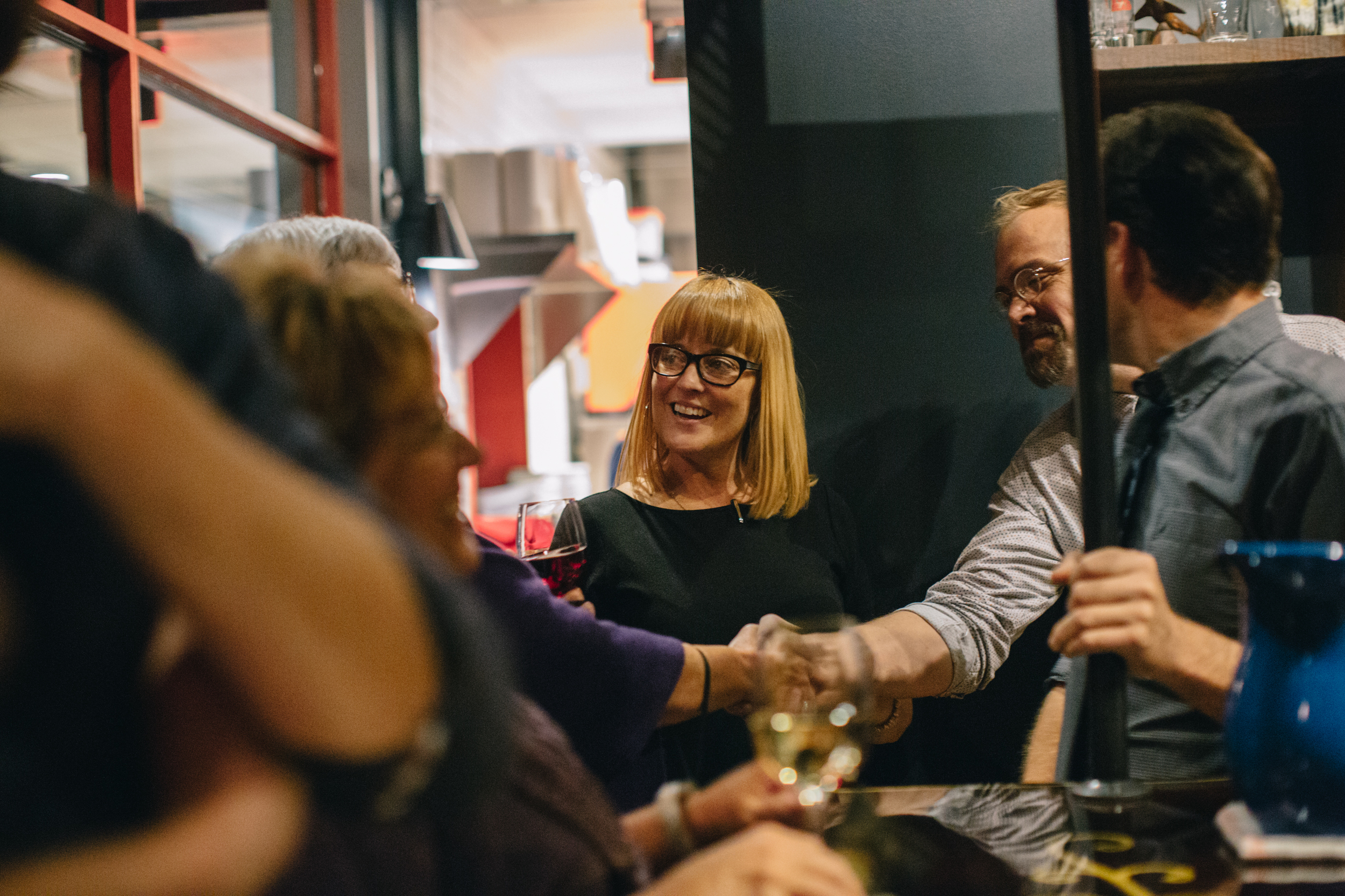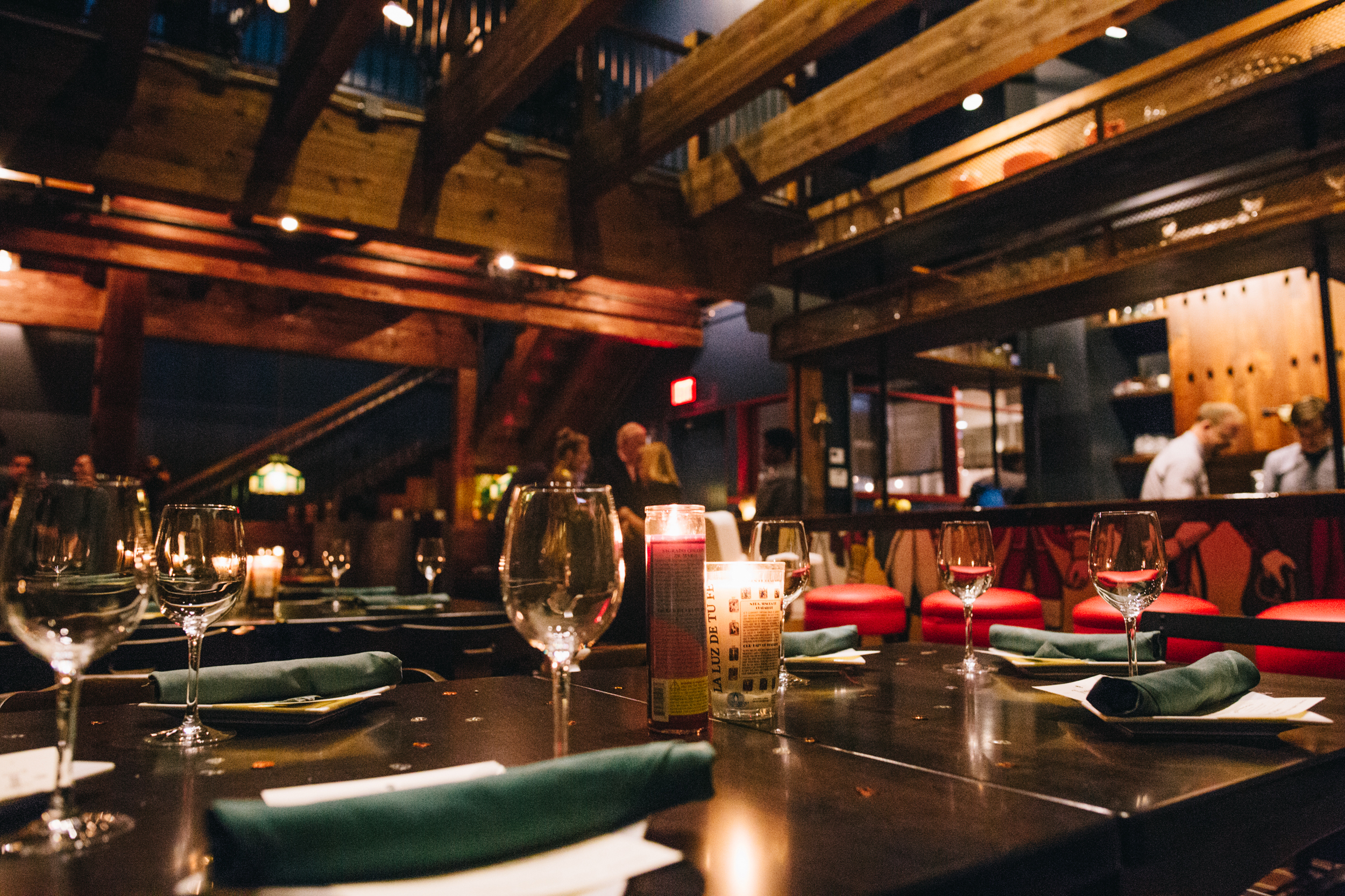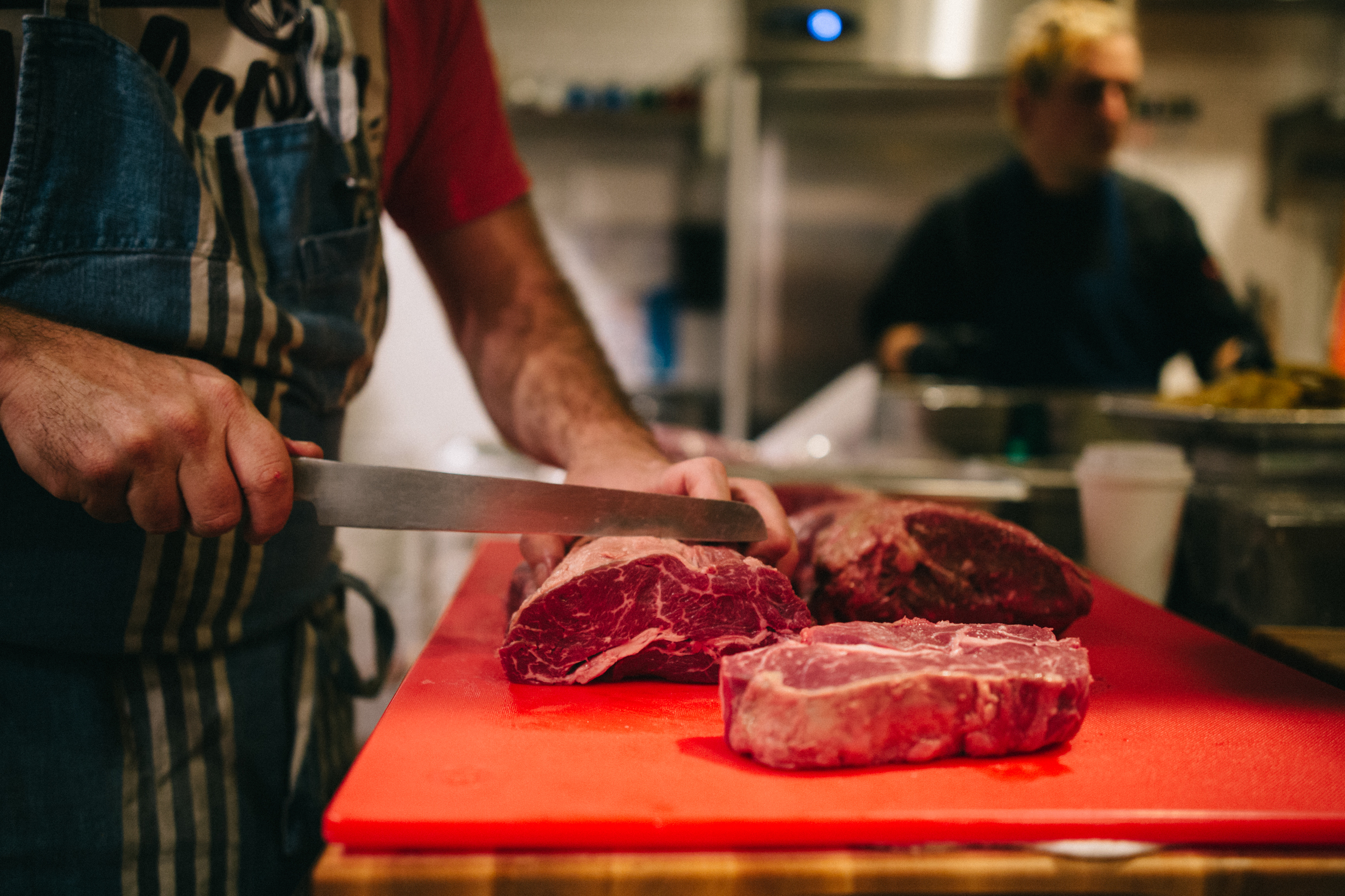The League of Extraordinary Hospitalitarians
Heaven knows, Southerners love their clubs. Problem is, most of us can’t afford to join them. So five Atlanta restaurant vets have set out to do the impossible: Create a place that feels like home to anyone who’s starved for genuine Southern hospitality, with excellent food and drink, and make it affordable for folks who don’t manage hedge funds. It’s a tall order. Can they pull it off?
The South doesn’t have a lock on hospitality; we’re just better at it. We are so hospitable, in fact, that we attract people from elsewhere who want to experience our hospitality. What’s weird, though, is that the South also attracts people from elsewhere who want to practice our hospitality. That’s right. The man or woman who finds a sense of purpose in the “cordial and generous reception and entertainment of guests or strangers” will often gravitate southward.
If one is a hospitalitarian, then this is the place to be.
Consider a man named Greg Best, a bartender and a rather extraordinary one at that. Best was the subject of the very first feature story in The Bitter Southerner. As those of you who have followed us since the beginning will know, the original intention of this site — before our ambitions got a bit larger — was to feature the work of Southern bartenders. Best was doing amazing drinks, with distinct Southern signatures, at Holeman & Finch Public House in Atlanta. He was arguably one of Atlanta’s greatest bartenders, and Atlanta was where we lived, so we decided to start with him.
Then we found out he was from Poughkeepsie, N.Y.
Well, shit.
But as we talked to Greg, who told us that he considered himself “a Yankee by birth and a Southerner by choice,” we first began to see this phenomenon emerge — the hospitalitarian gravitating toward the region in which hospitality is practiced best. Best told us, “On the most rudimentary and basic levels, the courtesies that are played out in Southern cultural rituals are things I think the entire world could learn from. Rooting our industry in the gracious hospitality that is abundant down here, that’s where it’s at.”
Those words helped us find one of the purposes of The Bitter Southerner — the idea of exploring the stories of what attracts the best and brightest to the South, as well as the stories about the great stuff already here.
But a couple of problems have arisen in the hospitality industry. They are called fetishism and money. In other words: How hospitable is the South, really, when our hospitality is extended only to a select few who can afford it? The growth of global interest in Southern culture and cuisine has dramatically driven up the prices of many of our best food-related experiences.
Consider this scenario. Certainly, anyone who has had the privilege of eating at one of the South’s greatest restaurants, such as The Barn at Blackberry Farm in Walland, Tenn., will always treasure the memory of the buttermilk panna cotta with trout roe. It is made with great skill and care, tastes divine, and looks like art. Its freshness is unquestionable. You know the trout roe was inside a fish in a nearby stream yesterday. The buttermilk was in the cow’s udder yesterday, too. And the people who serve you the dish are good, genuinely hospitable people.
Eating that panna cotta, however, comes only as part of a prix fixe dinner that costs $125 per head, a price that doesn’t include drinks. Also, you probably won’t be able to get a reservation unless you’re a guest at the Farm, where rooms start somewhere north of $800 a night.
Most folks just can’t afford that. But such experiences have become firmly a part of the national media’s take on the “new South.” Last week, during a panel discussion at the Hot Tamale Festival in Greenville, Miss., John Huey, the Atlanta-born former editor-in-chief of Time Inc., gave it a rather entertaining name: “the bespoke-shotgun South.”
So where does that leave us folks who can’t afford the bespoke shotguns or the panna cotta? Is it conceivable the rest of us might have a place where we could find well-made food and drink of high quality at a reasonable price? And that such a place would receive us with the same cordiality and generosity offered to guests of pricier joints?
Greg Best and four partners have worked for two years, largely in secret, to pull off just such a feat in one little corner of Atlanta. The economic models and values they have applied to the problem have more in common with the “we jam econo” economic models and values of punk rock than with the standards of the restaurant industry.
This place will be interesting. This league of extraordinary hospitalitarians is boldly saying to the South’s largest city: We have made a place where you will receive excellent food and drink and genuine Southern hospitality, and you will leave that place with absolute certainty you got good value for your money, so good you will want to come back tomorrow and think you might actually have the money left to do it, even though the place is located in Atlanta's hot Krog Street Market. They are saying this publicly, and asking the public to hold them to that standard.
It’s a ballsy move, and no doubt a critic or two will question whether they pull it off. For us, at The Bitter Southerner, we just like their attitude, because it’s like our own: Pursue the vision and have faith the outcome will be right. We liked the attitude of this new little company (“Finch’s Nest,” according to the legal documents) so much, in fact, that we asked them to keep the name of their restaurant a secret until we could reveal it in this story.
Drum roll, please.
They call it the Ticonderoga Club.
Yep. They named a place in the South’s largest city after a fort built by French colonialists in northern New York.
That’s a pretty punk-rock thing to do, right there.
Ian MacKaye is the owner of Dischord Records, a very independent record label in Washington, D.C. He is perhaps most famous for his role leading the band Fugazi, which stirred up a rebellious spirit among angry teens all over the world in the 1980s and ’90s. A big part of Fugazi’s success, however, also came from its approach to the marketplace. Fugazi declared the following:
The band maintains a policy of affordable access to their work through low record and ticket prices and all concerts are all-ages.
MacKaye’s economic theory was this: Access was more valuable than money. He figured, the easier he made it for kids to see his band, the more he would ensure his band’s survival. Dischord Records remains a going enterprise. MacKaye might not be rich, but he gets by just fine and helps others do the same.
Not a bad model for the indie economy so many of us work in these days.
None of the Ticonderoga Club’s five partners ever mentioned Ian MacKaye in our conversations over the month leading up to this week’s opening, but at a night for friends and family there last week, I leaned over the bar and said to Best, “Would I be correct in assuming that this whole thing is kind of a punk-rock approach to the restaurant business?”
He answered, “Very correct, sir.”
The night I met with all five partners in early September, I remember it felt more like interviewing a band than a group of entrepreneurs. Best’s four partners are Paul Calvert, a Mainer who came South for his love of our literature then made a name for himself behind the bar in Atlanta at Sound Table and later at his much beloved Paper Plane; Regan Smith, a native of Johnson City, N.Y., who worked alongside Best as general manager at Holeman & Finch Public House; David Bies, a well-traveled cook originally from Barnesville, Ga., who spent a long stint as chef de cuisine at Atlanta’s top-of-the-line Restaurant Eugene; and Bart Sasso, a Connecticut native who grew up in Atlanta after his parents moved here in his early teens, a designer who handles the branding and storytelling side of the house.
Pictured from left to right: Paul Calvert, David Bies, Regan Smith, Greg Best & Bart Sasso
We talked about the economics of their venture. But first, we talked about the goal that unites them: the idea of hospitality.
“I just wanted a comfortable, not pretentious meeting place,” Smith said. The lone woman among four rather talkative men, Smith often has a difficult time getting a word in, but when she manages to do it, she typically provides simple, incisive summations of the larger group’s ramblings.
But all five are off and running when we bring up the motivations underneath their dream for the Ticonderoga Club.
“The goal is being a hospitalitarian,” Best says, to resounding “yeps” from his partners around the table. Hospitalitarian — one who practices hospitality for a living — seemed like such a logical word to me, even though I later learned that it is missing from the Webster’s Unabridged.
“It’s an inside mechanism that craves being around people like you, who understand you and want to communicate with you,” Best said. “Hospitality is the baseline of everything — business, life, everything. You have friends because there’s hospitality there. You have successful business enterprises because there’s hospitality there. Hospitality just means open communication.”
To Best, Bies, Calvert, Sasso and Smith, “hospitality” means the complete experience — from the greeting when you walk in, to what you eat and drink, to the feeling you get when the check lands on the table.
“I want to have this experience of hospitality, because I’m not at home cooking,” Bies says. “You know what I’m saying? I want to …”
Smith jumps in: “You want to take a load off the cook. It feels so good to do that.”
“Yeah,” Bies continues. “We’re having this conversation. It’s friends sitting at a table. We’re drinking, we’re eating. When the food hits the table or the drinks hit the table, I don’t want everyone to immediately stop and start examining the food. ‘Let’s talk about what this drink could have had to make it better or what this food needs.’”
What they’re describing, at the end of the day, is rather like Cheers — a place where everybody knows your name and they’re always glad you came, but with food and drink quality moved upward a few notches.
So I ask the obvious question: How can you be true to a vision like that and make it work economically?
“You take a hit,” Best replies. “We can’t throw smoke and mirrors anymore. Too many people eat out. Nobody spends their entire week cooking at home anymore. Nobody. So now, we’re in an uncomfortable position. Do we offer lower quality to make the industry-standard profit margin? Do we say that we can’t do what we’re all passionate about because it’s not affordable? So you’re left with really one option. We’re gonna do what we want. The philosophy is sound and the quality is sound, but we’re just not gonna make as much money off of it. As a good human being, is there another option? There’s not, not if we’re expecting people to come in multiple times, three or four times a week. That shit ain’t gonna happen if you’re charging $36 for a chicken leg and two little carrots. That’s not a reality anymore.”
Bies jumps in. “It starts by asking ourselves, what do we need to do to not lose? But also, what we do need to do to make everything approachable, affordable and a good value — and still amazing?”
Now it’s Sasso’s turn. “It goes back to that first transaction. You can’t be like, ‘How do we make our margin on that first drink, because they may not order a second?’ Well, our goal is to make sure they order a second.”
Now Calvert: “And more importantly, to make sure they want to come back week after week and month after month. We want to dial in on how people really live and what they really need. We want our restaurant to be a place where they feel at home.”
So they’re gonna make the best product they can, then make it accessible as possible, with the assumption that doing so will put enough money in their pockets to keep the Ticonderoga chugging along.
Punk-rock economics.
This is the part of the story where you’d expect Standard Restaurant Writer to tell you about the amazing food and drink you can expect at the Ticonderoga Club!
You’ll have to find that out for yourself. The problem is, while you can get Best, Bies, Calvert, Sasso and Smith to talk a little about the food and drink, they quickly start talking again about the place. What the place itself means. What it represents to them.
“I default to the wise words of my partners,” Best concludes. “Our whole goal is to just make a place that is as comfortable as a household. Maybe you come for dinner some nights. Other nights, you come on your way home for a sip. Other nights, you have a shitty fucking dinner somewhere and you come to us for a course correction. All we want to do is be the resounding fucking benchmark in a land with no benchmarks, because anymore, you cannot rely on anything.
“How about we just make one thing that’s reliable?” he continues. “It doesn’t matter if Paul is behind the bar or I’m behind the bar or Regan is at the door or Dave is in the kitchen. In a perfect world, to answer your question, our names, our personalities will kind of vanish like so much morning fog and what we create together — the Ticonderoga Club — will be the place that is infallible. The place where when all is wrong in the world outside, we seek solace in this most hallowed ground. That kind of thing. It’s not about us. It’s about a reliable place.”
Calvert chimes in.
“Did you know that when the Ticonderoga Club opens, it will be our 249th year?” he asks.
“What?” I reply. “When you open, you’re going to say it’s the 249th year?”
“It is!” Sasso replies. “We’re just the Atlanta local.”
That’s right. This league of extraordinary hospitalitarians is so serious about creating the One Reliable Place they’ve dreamed of that they’ve created their own mythology. Every three months, they will publish something called the Ticonderoga Quarterly, which will, one presumes, document the proceedings of this mythical, centuries-old club at which everyone has always been welcome.
Evidently, their vision was so compelling, it convinced David Wondrich, Esquire’s cocktail columnist and the leading authority on the history of American bars, to become part of the fun. Wondrich has taken on the role of one of the mythical Ticonderoga Club’s past presidents. On the day I met with the five partners, back in September, Wondrich delivered his first “president’s letter,” which will be published in the first Ticonderoga Quarterly. It reads as follows:
Fort Ticonderoga bristled with eighty-three cannon when the immortal Ethan Allen demanded that in the name of the Lord God Jehovah and the Continental Congress it strike its banners, so obnoxious in the sight of a Freedom-loving people, and yield its arms. It struck; it yielded — o, overwhelming moral force! Those selfsame eighty-three brass and iron guns did the young and learned Henry Knox, bookseller no more, convey by travois and sledge and force of brawn across the frozen length of Massachusetts; convey over Hoosac and Greylock and Pocumtuc and Tekoa; convey through ice and sleet and frozen rain; convey to Bunker’s Hill where thrice did the red-clad ranks advance and thrice did Ticonderoga’s Eighty-Three bark their iron words and leave the lobsterbacks drifted on the ground as thickly as autumn leaves in Vallombrosa. Thus was a republic won.
And now, here at the old Ticonderoga, thrice have eighty-three years rolled their course around the bowl of heaven. When, 249 years ago, a group of young gentlemen from the northern colonies, finding themselves adrift (as it were) in the Sweet Sunny South, banded together to preserve and extend their native forms of refreshment and recreation, scarce could their noble thoughts have extended so far into the future. Yet here at the Old T we still gather in our little groups around the flowing bowl, filled by our current compounding chemists with the same proportionate mixture of rum and Madeira and oleosaccharum of lemon that it was in the days of Tubbs and Upton and Harding and all of the other upright men and women who held the keys to the those hallowed cellars whose dusty, long-slumbering bottles have so long gladdened our spirits. With that, Ladies and Gentlemen, I ask you to raise your glasses and drink: Ticonderoga! Ticonderoga!! Ticonderoga!!!
— David Wondrich, President, Ticonderoga Club, 1999-2003
So there you have it. Five Southerners by birth or choice banding together to open a brand new old club — a place where, they say, all will be welcome and will want to return. Personally, I can’t wait to see the place full of tipsy ladies and gentlemen from everywhere, raising their glasses and shouting three times, some of them with distinctly twangy accents, “Ticonderoga!”
Weird, maybe. But also the kind of new South I want to live in — one in which bespoke shotguns and broad verandahs are not always required.
Our Bitter Southerner numbered cocktail series is now up to No. 6. But those of you who have followed the slowly unfolding series will know that The Bitter Southerner No. 2 has not yet been revealed.
We can now tell you why. Greg Best created The Bitter Southerner No. 2 when he was still at his former place of business, but had moved on to begin planning the Ticonderoga before we had a chance to publish it. So we elected to hold off revealing the recipe until his next place was open. When the Ticonderoga Club opens (within the next two weeks, we are assured) The Bitter Southerner No. 2 will be available.
At that time we’ll give you a sneak preview of the Old No. 2 — including the instructions for how to make it — just as it has always been made, throughout 249 years of Ticonderoga Club history. (Insert wink emoji here.)



















